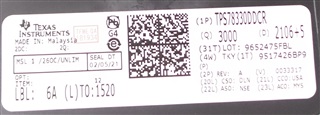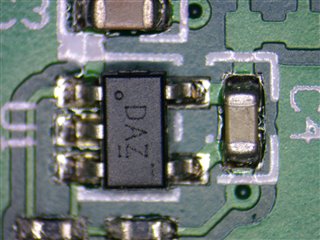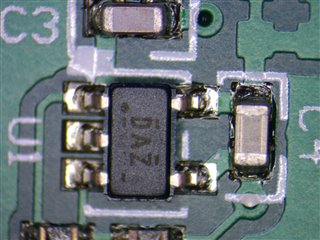- Ask a related questionWhat is a related question?A related question is a question created from another question. When the related question is created, it will be automatically linked to the original question.
This thread has been locked.
If you have a related question, please click the "Ask a related question" button in the top right corner. The newly created question will be automatically linked to this question.
Hello,
We are seeing issues in the quiescent current on a batch of TPS78330DDCR we have been supplied with.
On previous batches we have measured less than 1uA but on a particular batch we are seeing around 20uA.
Previous parts were made in Thailand but the batch in question is from Malaysia so I would like to know if TI knows of any issues with this particular batch of parts?
See image below of label

Hi Daryl,
I have not heard any other reports of such failures. If you need to start a return please see the Customer Return page for the process, which depends on how you acquired the parts.
https://www.ti.com/support-quality/additional-information/customer-returns.html
Kyle Van Renterghem
Applications Manager
TI LDOs
Hi Kyle,
I am the engineer working with Daryl on the product where these parts are used. We are using the enable pin as an under voltage lockout. Please see my previous post on this. The latest reel of these parts have no enable pin hysteresis and Iq is mush higher than normal. The parts respond with a linear behavior around 0.8V (about 670K source resistance) on the enable pin. It may be that we have a bad batch or something off the grey market made to look like a genuine product. Our normal supply chain is completely disrupted at the moment like everybody else. We never purchase outside of your official distributors under normal circumstances. Could I please ask you to double check the label Daryl sent you. The top marking is "DAZ" and very similar to previous good batches except that it only has two dashed lines instead of 4. We have used many thousands of these regs in the past with complete success. It's just this most recent reel that has serious problems.
Thanks and all the very best from us for Christmas.
Dean.

Pic1 BAD PART

Pic2 GOOD PART
Hey Dean,
We understand the challenges customers like yourself are face sourcing parts to keep their manufacturing lines up and running during these extraordinary times.
Your description of the new material's behavior has me worried that you may have gotten some gray market material which is not a genuine TI IC. The fact that the Iq on the whole reel is orders of magnitude higher than the spec is especially concerning, because every unit shipped from TI is tested. 20uA would never pass our manufacturing tests since this device has a max Iq of 800nA across temp. I have not heard any other reports of similar returns for this device, and a failure like this would have come to my attention.
Unfortunately to check the validity of the label this needs to go through our customer support team. Our Anti Counterfeit page has info and a link that can be followed https://www.ti.com/support-quality/quality-policies-procedures/anti-counterfeit.html
In case it is helpful, below are some low Iq LDOs with the same pin out as TPS783 that the TI Store currently shows inventory on
3.0V
TPS7A05, 1uA
https://www.ti.com/store/ti/en/p/product/?p=TPS7A0530PDBVR
TPS706, 1uA
https://www.ti.com/store/ti/en/p/product/?p=TPS70630DBVR
3.1V (in case you have a little flexibility in Vout)
TPS7A05, 1uA
https://www.ti.com/store/ti/en/p/product/?p=TPS7A0531PDBVR
TPS7A03, 200nA
https://www.ti.com/store/ti/en/p/product/?p=TPS7A0331PDBVR
TPS7A20, 6uA (and low noise)
Hi Kyle,
I appreciate your help with this and will ask Daryl to follow up through customer support. We've never had anything like this on a critical parameter from TI before and my guess is these parts will turn out to be fake. I'll try to work out what they are from their behavior time permitting. Definitely a 3V part with logic level active high enable, no hysteresis and 20uA Iq. I'll post back if I'm confident to take a guess on this. Thanks also for your suggested alternates. We are already using the TPS7A05 and its a good candidate. I'm also really excited about the TPS7A20 and have designed it into another product recently for a low noise clock supply in a digital audio product.